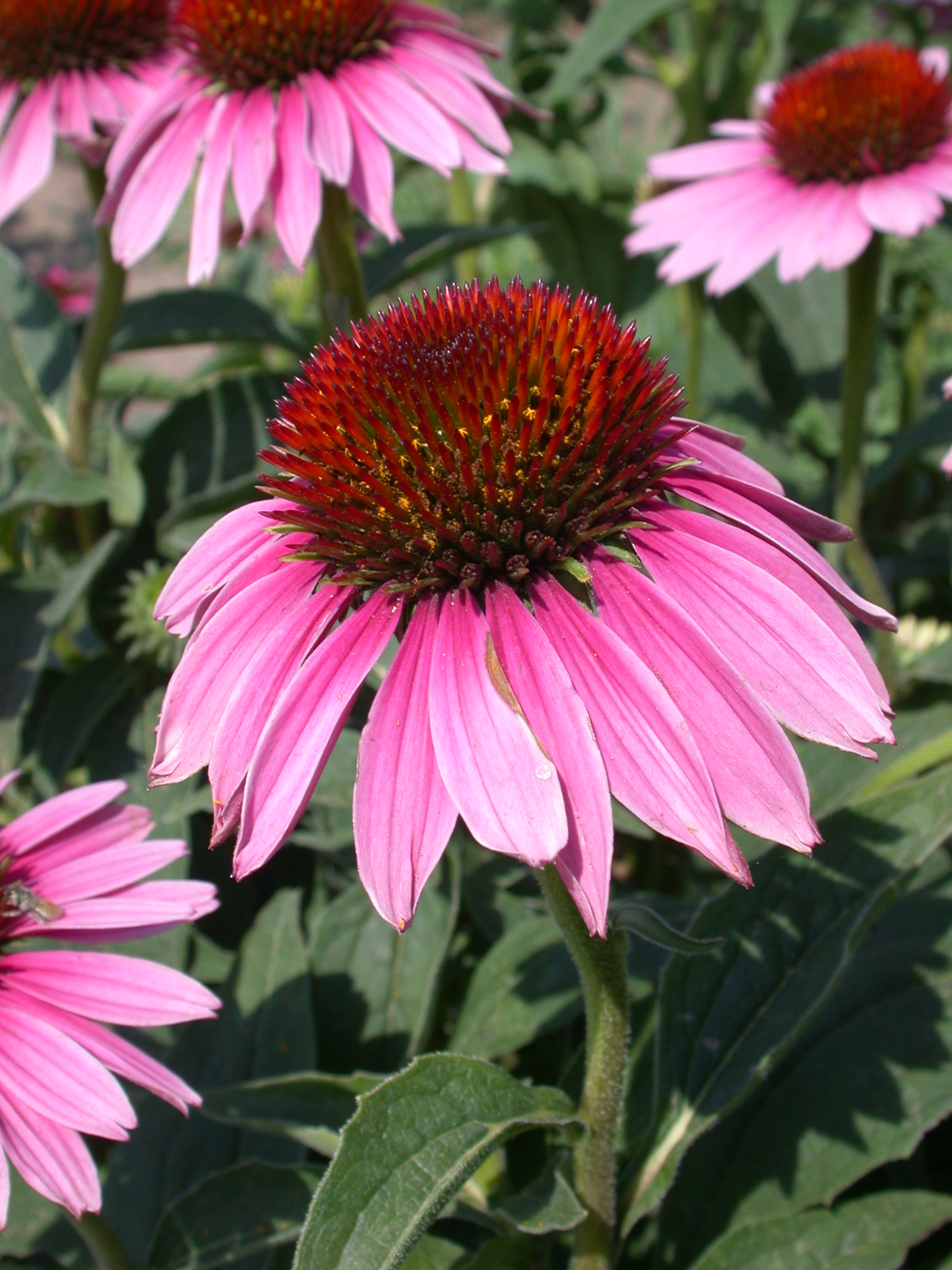Echinacea spp. – Coneflower species
Echinacea species are perennial, herbaceous medicinal plants belonging to Asteraceae family/Asteroideae subfamily (H). Purple coneflower is easily distinguishable from the other two species by its morphological features. Narrow-leaved and pale coneflowers are quite similar, they can be differentiated properly only in flowering time. The roots are placed deeply under the soil surface; the rhizome is short, vertical. The stems are 100-150 cm tall, branched, the whole plant is covered with hair. The leaves are lanceolate, oblong-oval, the margins are serrulate. The flowers stand in big, terminal inflorescences, the disc florets 2-9 cm long, 0.5 cm wide, light purple-purple colored. Flowering time: June-September.
The coneflower species originates from North America. Az E. purpurea is distributed in humid regions, while E. angustifolia and E. pallida are frequent on dry prairies. Coneflowers prefer direct sunlight and warm climate, they are frost-tolerant.
The dried flowering shoot (Echinaceae purpureae herba, Echinaceae angustifoliae herba, Echinaceae pallidae herba) and the dried root (Echinaceae purpureae radix, Echinaceae angustifoliae radix, Echinacea pallidae radix) are the drug of coneflower species. Echinaceae purpureae herba, Echinaceae purpureae radix, Echinaceae angustifolia radix and Ehinacea pallidae radix are mentioned by the Hungarian Pharmacopoeia, and ESCOP-monographs. According to the requirements the quality drug contains 0.2 % (Echinacea pallidae radix), 0.5 % (Echinaceae angustifoliae radix) echinacoside. The caffeic and cichoric acid content is 0.1 % in Echinaceae purpureae herba and 0.5 % in Echinaceae purpureae radix.
The main active agents of coneflowers are caffeic acid derivates, alkyl-amides, polysaccharids and essential oil. There are differences between the species by their active substance content. They are also accumulate flavonoids, polyacetylenes, alkaloids (such as toxic pyrrolizidine alkaloids) in a small amount.
The coneflower drug is efficient for treating cold, or chronic diseases of upper-respiratory or excretory organs. The consumption of Echinacea medicaments is also important in disease prevention because of its immunstimulant activity. Externally it is used for curing wounds, ulcers.


